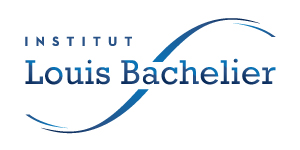The Chair’s Seminar is aimed to promote discussions between Chair Energy and Prosperity members coming from different academic institutions. Access is free to any researcher.
Speaker : Michael Ghil (CERES, ENS Ulm) – Coupled Climate–Economics Modeling and Data Analysis: Endogenous Business Cycles and Fluctuation–Dissipation Theory
Abstract : This talk will address the mathematics of non-equilibrium macroeconomics [5] and of its interaction with climate variability and climate change [1,2]. First, I will quickly summarize parts that of this group’s research program that have already been presented by two collaborators: biological and economic network resilience (C. Colon) and highly idealized climate–economy–biosphere (CoCEB) modeling (K. Ogutu). Next, I will review earlier work on endogenous business cycles (EnBCs) [5] and on how they affect the impact of natural catastrophes on the economy. Based on these previous findings, I will formulate an economic version of fluctuation–dissipation theory and show that it is supported by available data from the U.S. Bureau of Economic Analysis [4]. Finally, work in progress on the synchronization of business cycles across the world will be presented [5].
References
[1] Chavez, M., M. Ghil and J. Urrutia Fucugauchi, Eds., 2015: Extreme Events: Observations, Modeling and Economics, Geophysical Monograph 214, American Geophysical Union & Wiley, 438 pp.
[2] Ghil, M., 2017: The wind-driven ocean circulation: Applying dynamical systems theory to a climate problem, Discr. Cont. Dyn. Syst. – A, 37(1), 189–228, doi:10.3934/dcds.2017008.
[3] Groth, A., and M. Ghil, 2017: Synchronization of world economic activity, Working Paper, E&P Chair, http://www.chair-energy-prosperity.org/publications/synchronization-of-world-economic-activity/.
[4] Groth, A., P. Dumas, M. Ghil and S. Hallegatte, 2015: Impacts of natural disasters on a dynamic economy, Ch. 19 in Extreme Events: Observations, Modeling and Economics, M. Chavez, M. Ghil and J. Urrutia-Fucugauchi (Eds.), Geophysical Monograph 214, Am. Geophys. Union & Wiley, pp. 343–359.
[5] Hallegatte, S., M. Ghil, P. Dumas, and J.-C. Hourcade, 2008: Business cycles, bifurcations and chaos in a neo-classical model with investment dynamics, J. Economic Behavior & Organization, 67, 57–77, doi: 10.1016/j.jebo.2007.05.001 .
> Find the list of the past and forthcoming sessions of the seminar.
Découvrez en ligne la dernière newsletter et inscrivez vous pour recevoir la prochaine


